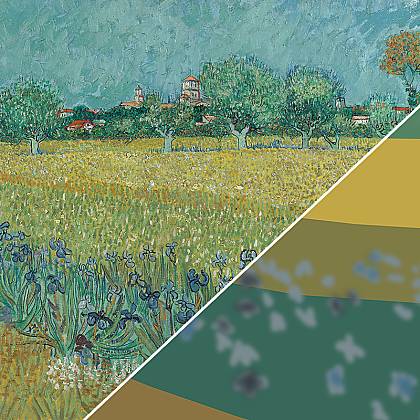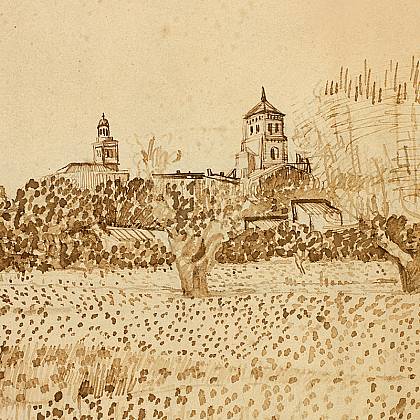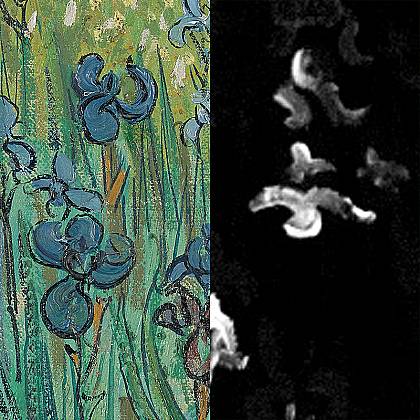Thick brushstrokes
Field with Irises near Arles
In this painting the great variety of Van Gogh's brushstrokes is very clear. He applied paint thickly in the wide brushstrokes in the sky and in the small dots – plants – in the foreground. This technique is called impasto. These thick brushstrokes are plainly visible if you look at the painting under raking light (light from the side).
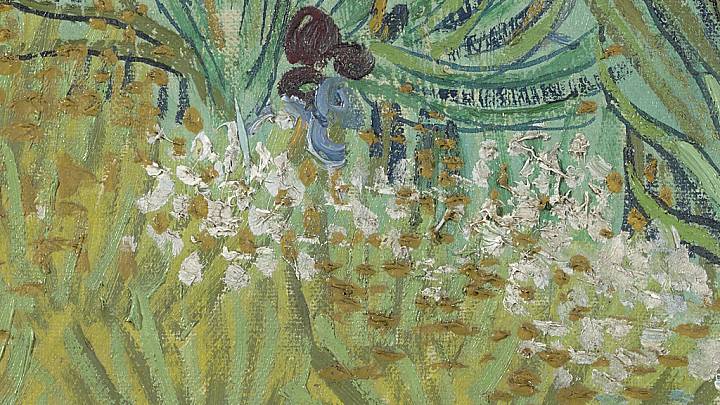
In raking light we can see that Van Gogh used a lot of paint for the dots depicting the little plants in the foreground.
Graphic brushstroke
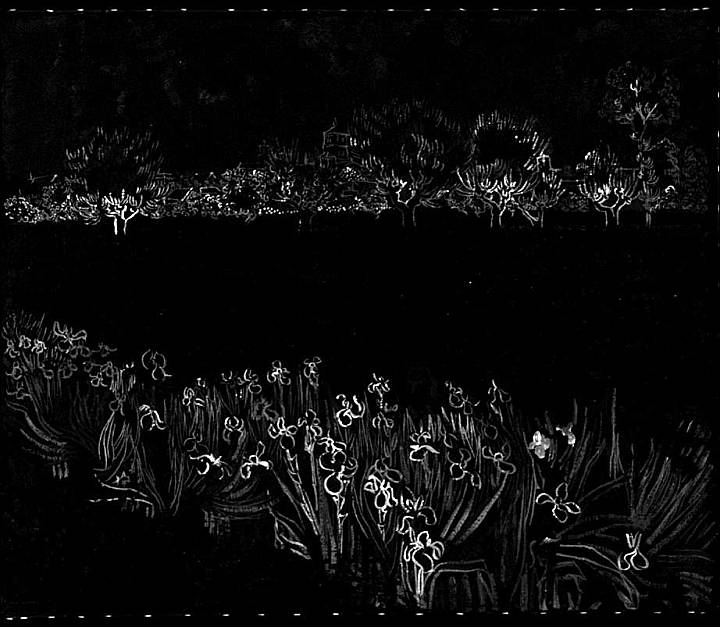
Van Gogh drew the contours in pencil and later filled them in with paint. Finally, at the end of the process, he went over the contours of the trees and the irises again, using fine, drawing-like lines. He used Prussian blue paint for these lines.
Prussian blue is made with a pigment consisting of iron compounds. Macro X-ray fluorescence analysis (MA-XRF) reveals the iron in the paint. This enables us to see the fine contour lines clearly.
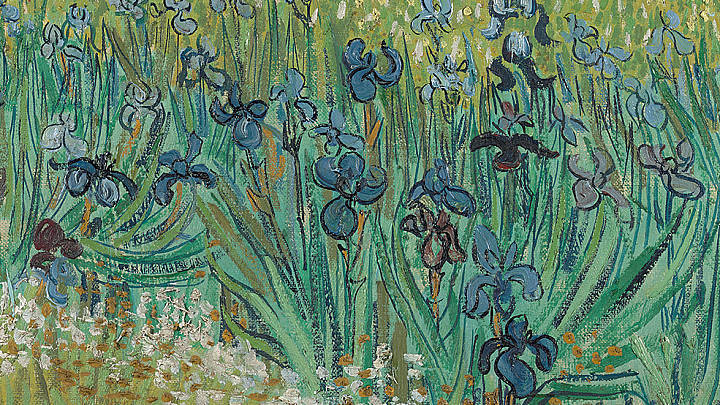
Detail of the irises in the foreground, in normal light and in the iron scan (MA-XRF).
In a letter to fellow-painter Émile Bernard (12 April 1888), Van Gogh explained how he set to work when painting:
While always working directly on the spot, I try to capture the essence in the drawing - then I fill the spaces demarcated by the outlines…, likewise with simplified tints, in the sense that everything that will be earth will share the same purplish tint, that the whole sky will have a blue tonality, that the greenery will either be blue greens or yellow greens, deliberately exaggerating the yellow or blue values in that case.
Letter to Emile Bernard. Arles, on or about Thursday, 12 April 1888.
